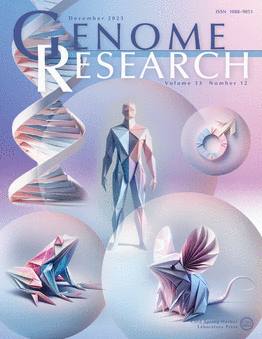使用家族基因型和表型(GPF)平台分析大量复杂的SFARI自闭症队列数据
IF 5.5
2区 生物学
Q1 BIOCHEMISTRY & MOLECULAR BIOLOGY
引用次数: 0
摘要
探索影响表型的基因型变异是遗传学研究的基石。大量包含深度基因型和表型型家族的藏品的出现,使得寻找与复杂疾病相关的变异成为可能。然而,管理这些大规模的数据集需要专门的计算工具来组织和分析大量的数据。家族基因型和表型(GPF)是一个管理来自家族集合的基因型和表型的开源平台。GPF允许对遗传变异进行交互式探索,对新生突变进行富集分析,使用表型/基因型关联工具和安全的数据共享。GPF用于传播两个家庭收集数据集,SSC和SPARK,用于研究自闭症,由西蒙斯基金会建立。西蒙斯基金会的GPF实例(GPF- sfari)为SSC和SPARK提供了全面的基因型和表型数据的保护访问。GPF-SFARI还向公众提供广泛收集的来自自闭症和相关疾病患者的新生突变,以及描述基因在自闭症中作用的受保护数据集的基因水平统计。然而,GPF是通用的,可以管理来自其他小型或大型家庭收集的基因型数据。在这里,我们强调了GPF在GPF- sfari背景下的主要特征。本文章由计算机程序翻译,如有差异,请以英文原文为准。
Analyzing the large and complex SFARI autism cohort data using the Genotypes and Phenotypes in Families (GPF) platform
The exploration of genotypic variants impacting phenotypes is a cornerstone in genetics research. The emergence of vast collections containing deeply genotyped and phenotyped families has made it possible to pursue the search for variants associated with complex diseases. However, managing these large-scale data sets requires specialized computational tools to organize and analyze the extensive data. Genotypes and Phenotypes in Families (GPF) is an open-source platform that manages genotypes and phenotypes derived from collections of families. GPF allows interactive exploration of genetic variants, enrichment analysis for de novo mutations, phenotype/genotype association tools, and secure data sharing. GPF is used to disseminate two family collection data sets, SSC and SPARK, for the study of autism, built by the Simons Foundation. The GPF instance at the Simons Foundation (GPF-SFARI) provides protected access to comprehensive genotypic and phenotypic data for SSC and SPARK. GPF-SFARI also provides public access to an extensive collection of de novo mutations from individuals with autism and related disorders and to gene-level statistics of the protected data sets characterizing the genes’ roles in autism. However, GPF is versatile and can manage genotypic data from other small or large family collections. Here, we highlight the primary features of GPF within the context of GPF-SFARI.
求助全文
通过发布文献求助,成功后即可免费获取论文全文。
去求助
来源期刊

Genome research
生物-生化与分子生物学
CiteScore
12.40
自引率
1.40%
发文量
140
审稿时长
6 months
期刊介绍:
Launched in 1995, Genome Research is an international, continuously published, peer-reviewed journal that focuses on research that provides novel insights into the genome biology of all organisms, including advances in genomic medicine.
Among the topics considered by the journal are genome structure and function, comparative genomics, molecular evolution, genome-scale quantitative and population genetics, proteomics, epigenomics, and systems biology. The journal also features exciting gene discoveries and reports of cutting-edge computational biology and high-throughput methodologies.
New data in these areas are published as research papers, or methods and resource reports that provide novel information on technologies or tools that will be of interest to a broad readership. Complete data sets are presented electronically on the journal''s web site where appropriate. The journal also provides Reviews, Perspectives, and Insight/Outlook articles, which present commentary on the latest advances published both here and elsewhere, placing such progress in its broader biological context.
 求助内容:
求助内容: 应助结果提醒方式:
应助结果提醒方式:


